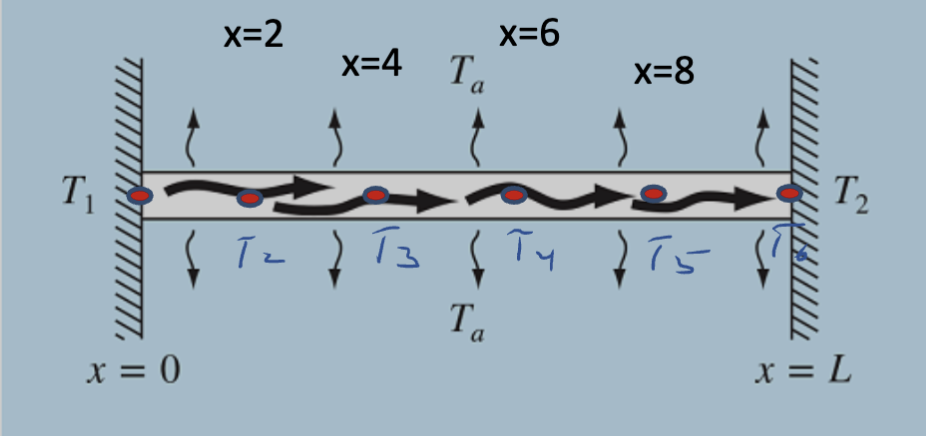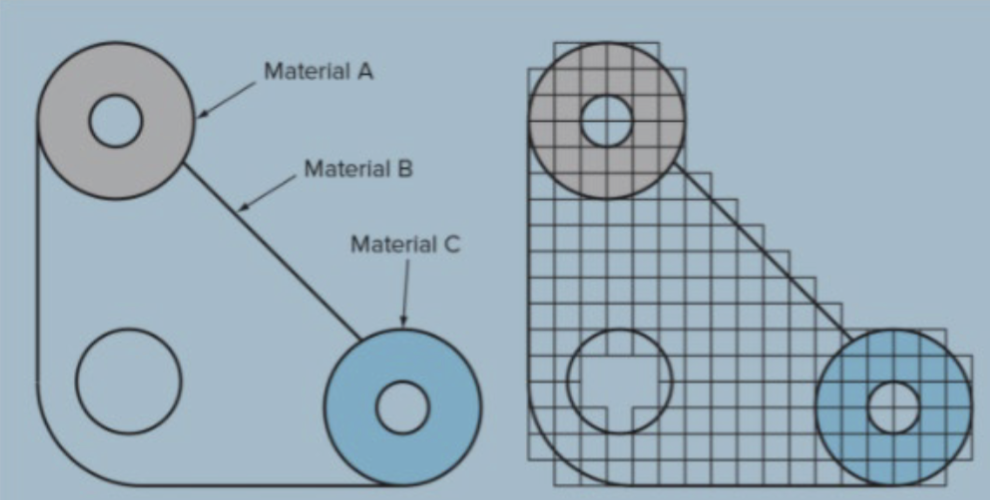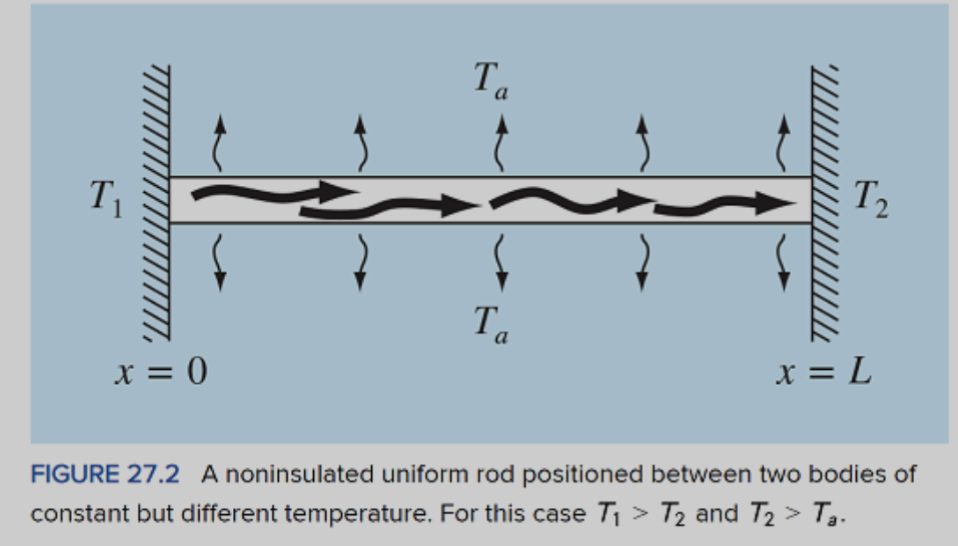Using this example problem:
BVP Example
Heat transfer from an uninsulated rod to ambient, with two thermal boundary conditions (one at each end of the rod):
With conditions:
For , :
- (Heat coefficient, not step size)
Link to original
The finite difference method uses difference approximation for derivatives to generate a set of equations. For our equation for the example above:
Recall for second derivative, centered difference can be written as:
Consider the finite divided difference approximation for the second derivative:
Substituting:
And collecting terms:
Now we can solve this. Using a step size of 2, we have:

This gives us 4 interior nodes, such that:
Using a method such as Gauss-Seidel, this solves to:
Discretization Concept
The concept behind FDM is to discretize complex geometries. For example, a fixed grid form:

This lets us calculate values at discrete points.
Limitations:
- Challenging to apply FDM to irregular or complex geometries.
- Difficult to address unusual or complex boundary conditions.
- Does not easily address different materials in the same analysis.
